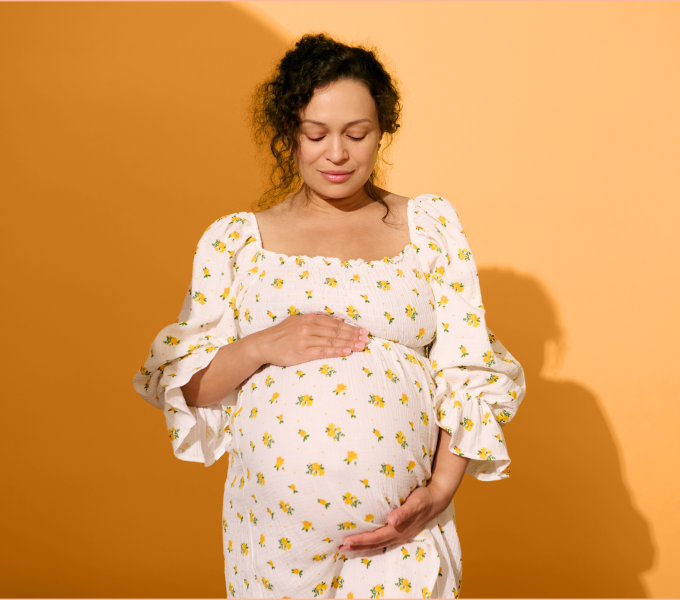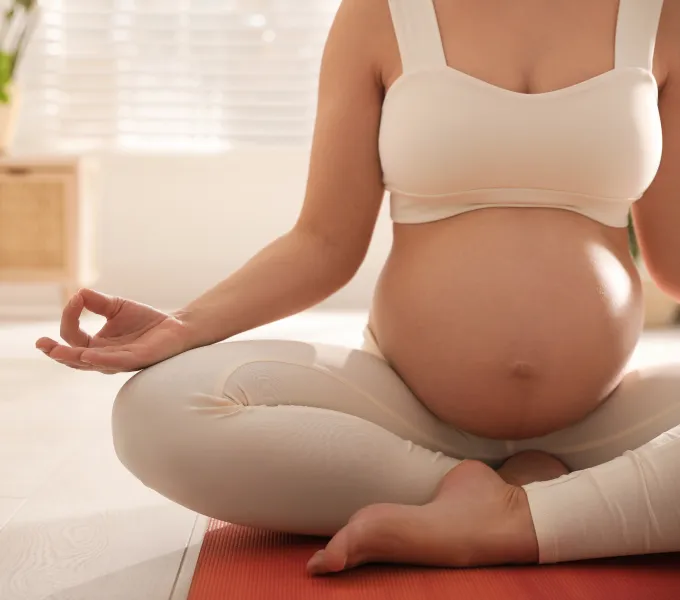
Third Trimester Back Pain Explained
If your baby bump was small before, by the third trimester it's clearly visible and just... keeps... growing. For the rest of this trimester, your body will continue to change its shape and size very obviously and very quickly. So it will probably come as no surprise to learn that back pain that may have started in your first or second trimester is likely to get worse — and new back pain can crop up and take your discomfort to a whole new level.
Under no circumstances should you just shrug off back pain and chalk it up to the 'burden' of carrying a baby. You do not have to endure pain in any trimester — see a physical therapist who specializes in pregnancy and find out what you can do to get relief.
In the meantime, here are some potential reasons why your lower back might be screaming at this point in your pregnancy.
1. Your precious cargo is putting on pounds....
By the start of the third trimester, it can feel as though your body couldn't possibly get any bigger but over the course of these last few months, your baby will grow at an incredible rate, more than doubling in size. As your baby takes up more and more room in your abdomen, they may begin to kick or lean in different directions, which can contribute to pain and discomfort.
If your baby is positioned higher in the abdomen or if you have a smaller torso, you may begin to feel increased pressure at your ribs. This can add to difficulty breathing but can also lead to rib and mid-back pain, especially while seated or lying on a particular side.
If your baby is positioned lower, you may experience increased low back pain as your baby places increased pressure on your pelvic girdle, especially while seated or standing.
Throughout your third trimester, your baby's size and position will continue to shift and create sometimes painful pressure on your body.
2. ...and you may be, too (understandably!)
Carrying around an additional 20-30 pounds of weight is challenging for anyone, but more than half of people will exceed the recommended weight gain in pregnancy. No judgment here. Between food cravings, people bringing you treats, and relatives encouraging you to eat! eat! gaining weight can feel almost inevitable. Unfortunately, extra weight puts more strain on your entire musculoskeletal system.
In order to function properly, your muscles must become stronger and your spine more tolerant in order to compete with these greater compressive forces. If your body is not prepared to handle this sudden weight gain — potentially due to back muscle weakness, fatigue, or a history of spine-related dysfunction — back pain can become a serious problem.
3. Your spine keeps getting curvier.
The majority of the weight that's gained in pregnancy is positioned towards the front of your body within your abdomen. This distribution impacts the spine by pulling your belly forward, increasing your pelvic tilt and the lumbar curve in your back.
In order to compensate for this directional pull, your mid to upper back will assume an increased thoracic kyphosis, rounding the shoulders and contributing to a forward head position. These changes to your spinal position can lead to increased back pain anywhere along the spine, although low back pain is one of the most common complaints in pregnancy, affecting as many as two-thirds of all pregnant people.
4. Your breasts are filling out to feed your baby.
At this point in your pregnancy, you have probably noticed your tops may not be fitting like they used to, mostly because of your belly but also because of those growing breasts. As your body prepares for delivery, your breasts will increase size and weight in order to support lactation; during the third trimester, they may become swollen, tender and may begin to produce colostrum.
For some people, this increased growth may be fun, but these changes can sometimes lead to other issues. Larger breasts are known to cause increased demands on the extensor muscles that surround the neck and upper back and can lead to increased pain in the neck and shoulder regions.
5. Your abs may be drifting apart.
Diastasis rectus abdominis or DRA is a widening of the space between your two 'six-pack' muscles and occurs in up to 100% of people by the third trimester of pregnancy. While this separation may be considered a typical part of pregnancy, for many people this increased gap is associated with abdominal muscle weakness, poor ability to provide support to the spinal column, and an increase in low back pain.
For about two-thirds of people, DRA will resolve itself within a year of delivery, but it can be helpful to consult a physical therapist who specializes in pregnancy and postpartum care regarding your DRA; they can assess your separation and provide support and guidance to promote healing of the area in the postpartum period.
6. You may be experiencing "back labor".
Once you've entered the third trimester, it becomes especially important to pay close attention to any aches and pains you may be experiencing. Especially with back pain, take note of the following:
- Does my back pain change if I modify my activity or my position?
- Does my pain occur at regular intervals?
- Is my pain increasing either in intensity or frequency, even when I am at rest?
For many, back pain can be a sign of early labor and for some, this back pain can remain or intensify for the duration of the labor and delivery and is often referred to as "back labor." 10
One of the most common causes of "back labor" is the position of the baby. When a baby is in an occiput posterior position (or "sunny side up"), this can lead to severe back pain, prolonged first and second-stage labor, and increased medical intervention. But if your baby is currently in this position, don't worry, babies can still spontaneously rotate their position clear until delivery.
If you are experiencing back pain in the third trimester, don't hesitate to schedule a visit with a physical therapist who specializes in pregnancy and postpartum. Your PT will teach you practical strategies to reduce your pain, keep you strong and confident, and prepare your body for childbirth and a smooth-as-possible recovery.




